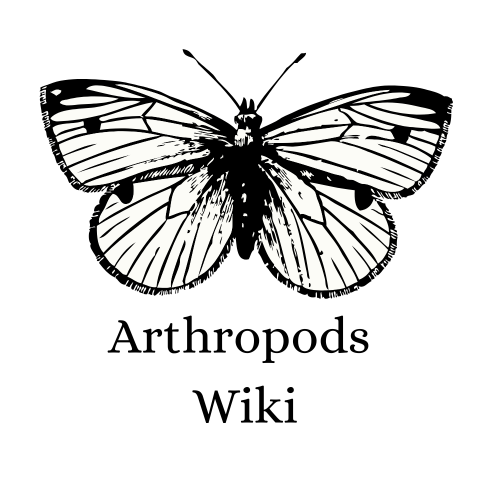Entomology
Entomology is the branch of science which focuses on insect specimen in a simpler form, Entomology is the scientific study of insects. A scientist who specializes in the study of entomology is called an entomologist.
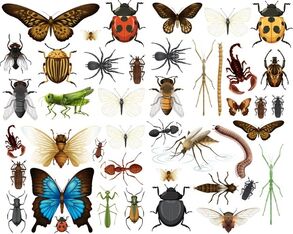
Entomology
Entomologists are often found at universities and they are mostly occupied with the study of economically inportant insects, because it is easier to get funding for research into plague species or honey-producing bees or textile producing silkworms than for a harmless little beetle that just chews some dead wood in the forest. There are over millions of specimens out there and even more to be discovered, A gentle note, that entomology can differ as well, or we can say that entomology can also focus on certain insect behaviors that may vary in every different species of arthropods insect behaviors can also be difficult under direct observations, Insect behaviours depict their survival and regular habits. while on the other hand we have forensic entomology which focuses on solving crimes by studying the insects found on dead bodies such as corpse flies, maggots and other insects found during the seen of crime.
The upside of this is that there is still an awful lot to be discovered about practically any insect you care to name that is not 'economically important'. Generally even very basic information, like what it eats exactly, how many eggs it lays, how it finds a mate, and how long do the several stages of development take, is not known. Listed below are different forms of entomology as it can also be about a particular Family of insects such as Odonata for example which a composition of damselflies & dragonflies, their are a few entomologists that only focus on this field in particular. IMPORTANT: VIEW ALL INSECT ORDERS IN THIS WIKI HERE.
Insect classification
It is quite difficult for one to study every single specimen hence they've classified them into insect orders. To make the study of insects simpler and easier and it divides into even smaller groups known as a family example, Chinese swallowtail belongs to the family Lepidoptera and from the family papilliondae which compromises of swallowtail butterflies.
Insect importance
General importance
Insects such as honeybees are the primary source of the famous sweetener used in a wide array of dishes ranging from candies to medicinal uses, silkworms are used from sericulture in many many countries as a common tradition for the obtaining of silk, a highly important textile used for clothing and a variety of purposes other than clothing and for making several ornaments. Insects are often consumed as food and considered as a delicacy in many traditions and countries and several species of jewel beetles used for ornamental purpose and as jewelry as well. They have an economic and a general importance in innumerable methods, they help us a lot in our daily lives but we often fail to realize their true importance.
Agricultural importance
Insect help in pollination and fertilizations of fruit seeds, this is incredibly important as more than 80% of the plant species need pollination to continue growing further and turning them into fruits, several vegetables and fruits widely consumed by humans are a result of pollination by bees, beetles and butterflies. There are other insects as well that have a great Agricultural importance and that is consuming harmful pests that can infest and take over plants, mantids, ladybugs and several species of beetles consume thousands of pests per day.
Forensic science
Insects help in solving crime cases, such study of insects is called Forensic science where maggots and corpse flies crawling over dead bodies undergo investigations that help in solving a few questions regarding crime, bees have an excellent sense of smell and are sometimes used by researcher to investigate a few notable clues, like when did the murder occur and so on.
Lepidoptera-Brief interview
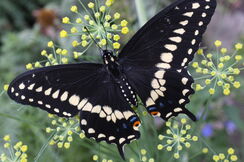
Lepidoptera is the Family of insects which is composed of butterflies and moths, for a detailed look into Lepidoptera click here. Lepidopterans have the largest wings as per their body length, Their wings are covered with small pigmented scales to protect their delicate wings from being harmed, these insects follow the complete metamorphosis, in their larval stage, most lepidopterans primarily derive their food from autotrophs (plants) and some species are also considered as an agricultural pest however as they develop into a chrysalis several changes take place once they emerge from their chrysalis they reveal their bright scaly wings that may take some time to dry out. As we've mentioned earlier their young ones are considered as an agricultural pest as for in some species but in their Adult form they help plants reproduce as Lepidopterans are one of the main insects that carry out pollination.
Coleoptera-A brief introduction
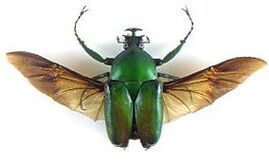
If you want a more detailed explanation click here. This family of insects consists of beetles, this family of insects may divide into further groups such as Blattodea, scarabs, ladybugs, rove beetles and many other hence Coleoptera is a superclass of insects. This family of insects is the most numerous one as Half of the insects are entirely belong to Coleoptera. These insects have two sets of wing, one is for flight while the other set of wings is meant to protect the inner whings which is known as an elytra. Some beetles have a polished-metallic elytra which may reflect light. Beetles have adapted themselves to almost every habitat & climatic conditions on earth ranging from the lush green canopy of the amazon basin to the tempting heat of the deserts, beetles have been, in their larval (juvenile) stage they're known as a grub, As a grub beetles normally live undergroung before eventually emerging out as an adult after surpassing the pupal stage where they molt for the final time.
Hymenoptera-Brief look
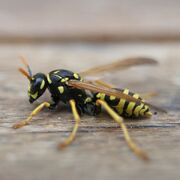
Wasp
Hymenoptera is the first insect order to exhibit social behaviors, If you want to have a more detailed look into Hymenoptera click here, Hymenoptera is the composition of several species of ants, wasps, honeybees and other insects to exhibit signs of basic intelligence & social cooperation. Ants are small basic insects, there are drone ants, worker ants & a queen, the drones only have one job which is to mate the female worker ants. Ants live in complex system of tunnels intersecting with each other occasionally ending up at the brood chambers, the worker ants will nurture younger ants, the same is applied to honey bees. Honey bees inhabit large structures called hives, bees are the most important insect not only that they give us sweet honey but also help in pollination in fact bees are the main insects to help in pollination! Honey bees are normally docile but species can be vicious & ferocious to humans. Wasps & hornets are much similar to bees, however wasps have been regarded as one of the most dangerous creatures known to cause several deaths per year but that is absolutely nothing compared to hornets, all of these insect use pheromones for pathfinding.
Odonata-Basic information
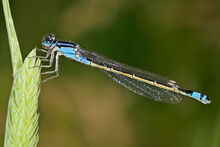
Ischnura heterosticta
Odonata consists of damselflies & dragonflies for a better deeper look into Odonata click here. These insects have a highly well-adapted flight mechanism (air bone) and are often known for their spectacular appearance, damselflies unlike dragonflies posses a rather slow-flight or fluttering they also keep their wings closed at rest which makes them different from dragonflies, dragonflies on the other hand are incredibly fast-fliers and keep their wings open at rest, Odonata only consists of carnivorous (predatory) insects, as during their juvenile stage of lives, dragonflies & damselflies live underwater and prefer hunting mosquito larva & tadpoles due to their availability there nymphs have a pair of appendages beneath their mouths that can be used as a hammer or to scoop up their prey , Odonata prefers freshwater habitat as a perfect place to repopulate their species further. Damselflies & dragonflies form a vast insect order that have been living since more than 325 million years!! the earliest ancestors of Odonata had a wingspan of an average 70 cm known as "Meganura" and lived before dinosaurs!
Diptera-Brief look
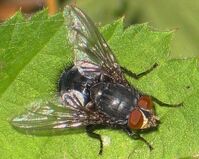
species of fly
consists of flies, mosquitoes, gnats, midges, hoverflies & other winged insects. These insects in their larval stage are known as "maggots" and go through a complete metamorphosis, Diptera consists of several winged insects houseflies being the most commonly well known example of such. Hoverflies are remarkably the most excellent fliers they can stay in mid-air. Hoverflies can often be confused with bees or wasps due to the vivid yellow & black marking on there abdomen used as mimicry to fool praetors. When an insect drowns midges will consume the carapace of the insect and the leftovers are consumed by mosquito larva. Although most Dipterans help in pollination, the spotted lanternfly is the most remarkable species known to cause an extreme ecological imbalance disturbing the ecology of the tropical forests. Midges are one of the only insects that can withstand the extreme cold temperatures a species of midge is even found in Antarctica
Dicyoptera-Stanza
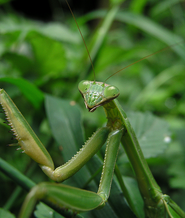
Praying mantis
This order of insects consists of Blattodea & mantids and are considered to be the part of the same insect order due to their long spiky legs in case of mantises, spiky appendages used to ensnare their prey making sure their prey has a little hope of escaping, mantids are also known for their natural camouflage, Making them difficult to find in the wild, flower mantises are remarkably known for their camouflage which is an excellent mimicry to their surrounding flowers, mantises can swivel their heads upto 180 degrees. Male mantids are a lot smaller than the females and are to be consumed by the female after mating this is a natural phenomenon which occurs in almost every species of mantids. Cockroaches are known for their highly flexible exoskeletons and their ability to consume food from a vast amount of available materials that normal insects can't afford consuming.
Neuroptera-Brief introduction
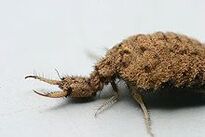
antlion
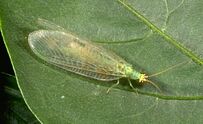
If you want a more detailed look at neuroptera click here. This order consists of strange looking winged insect normally lacewings, alderflies, scorpion flies, snake flies & other specimen belonging to Neuroptera. Each one of them has a remarkably strange & unique physical appearance. Lacewings are winged insects with large tinted wings and a pair of mandibles, they are a great help in agriculture as they consume a large number of pests in their larval & adult stages as well lacewings normally have wingspan of an average 5 mm. On the other hand we have snake flies, they are one of the nature's weirdest creations as for an account for their large necks where they got their common name from. Neuroptera also consists of antlions (as shown in the right picture) these insects have a special tendency in their larval stage which is to dig holes in the soil and ambush trespassing ants when it becomes an adult it will take a winged-form which looks similar to a dragonfly. Antlions have currently 2,000 species and prefer dry habitats with the presence of their favorite foods. Caddis flies with 45,000 described species are famously used as a bait by fishermen to catch a variety of fishes, caddis flies look similar to moths and undergo an incomplete metamorphosis.
Ephemeroptera-small introduction
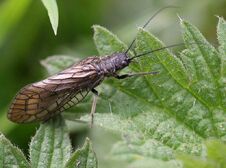
This order consists of namely two winged insects that are mayflies & stoneflies remarkably known among the entire animal kingdom for their short lives as an adult (mayflies). Ephemeropterans go through an incomplete metamorphosis & live as a nymph for upto a month or two and are much similar to a dragonfly nymph when it comes to predatory behavior and hunting tactics, Adult mayflies only live for 24 hours, the males die immediately after mating whereas females perish after laying their eggs. Mayflies have a pair of cerci at the end of their abdomen and triangular wings With 3000 described specimen belonging to every continent except Antarctica. With they prefer keeping their wings closed at rest like damselflies and butterflies. On the other hand we have stoneflies belonging to the sub-order plecoptera which has 3500 described specimen (more specimen of Plecoptera are being found everyday) found on every continent except Antarctica. Stoneflies are much much similar to mayflies in terms of behavior yet an entirely new whole of physical traits, they keep their wings closed at rest and have a strikingly close resemblance to Blattodea.
Orthoptera-small introduction
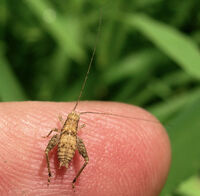
This order compromised of crickets, grasshoppers & locust can also be viewed here, It consists of more than 20000 known specimen, these insects are famously known for using stridulation in order to find a mate. These insects have highly adapted hind legs used for leaping and two pairs of wings they also posses large antennae in case of crickets. Crickets make noises by rubbing their wings together but what makes this possible is an alignment of hard structures present on a male cricket's wings, these hard structures rub against each other (normally 40-100 rubs in a single chirp) creating a high-frequency noise, grasshoppers & crickets have ears present on their hind legs which allows them to hear their surroundings! This order also consists of related species such as katydids known for their calls that resemble a person saying "Katy Did"
Phasmatidae & Phyllidae (Phasmida)
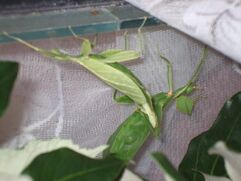
Leaf insect
This order consists of leaf insects & stick insects as we all must've seen but ignored as a twig or a leaf but Phasmida Consists of insects that excel at natural mimicry by pretending themselves to be a twig or a leaf. As seen in the picture to the right these little forest critters are nearly impossible to spot in their habitat. Leaf insects have small brownish-black blotches (seen in some species) on them to create a false notion to predators of a chewed-up leaf. stick only have a very few predators unless they make any sudden movements. Stick insects (also known as walking sticks, stick bugs & ghost sticks) have long selender bodies making them look like dead tree twigs fallen off on the forest floor. upon being threatened some species release a nasty chemical & some reveal their brightly colored wings concealed beneath their skin.
Zygentoma-Information box
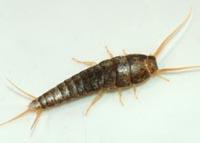
Silverfish (Thysanura)
Consists of insects that may not appear to be insects at all upon taking the fist glance, it only consists of 550 specimen described till now, This order consists of firebrats & silverfish (Also known as fish moths) Silverfishes got their name due to their slender-flat bodies, Silverfishes and firebrats have a few things in common that are a pair of cerci at the end of their abdomen & a hard flexible exoskeleton. Silverfishes are sometimes regarded as a household pest due to the wide range of foods they can consume. Firebrats are insects that prefer Highly-humid & tempting temperatures as a result they are more commonly seen outdoors during monsoon and often indoors near our fireplaces or beneath our couch cushions. They are quite friendly to human beings other than being a household pest.
Heteropterans-Clearing the confusions
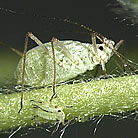
Bugs are often mistaken as another term used for describing insects, But actually not all insects are bugs but instead, All bugs are insects, well Heteroptera is here to clear the confusion one has regarding that. Bugs (heteropterans) is an order of insects which consists of more than 40000 described species. Dating back to 1810 when this order was firstly declared. These are insects with sucking & piercing mouthparts used for digging into sap, sap is the like the blood circulation in plants, Heteropterans namely consist of Cicadas, Stink bugs, Leaf hoppers, plant louse, Aphids and several other insects. These can be one of the biggest agricultural threats to farms due to their humongous diet, aphids are extremely successful specimen due to their reproduction methods-Binary reproduction. They are a huge pest to farms, gardens & orchards. Cicadas on the other hand are sometimes regarded as a pest due to their diet which is primarily composed of tree sap and they are best to be spotted during mid-summer and monsoon. they have a highly-well adapted flight as well. stink bugs have a nasty self-defense mechanism which is to release a foul smelling odor when they've been squashed or threatened they are also known as shield bugs due to their carapace which upon close observation resembles a shield.
Gladiators-missing insect order
Only discovered in 2019 almost no information is available about them, They inhabit the mountains of southern africa.
Insect relatives
We've came to an end of our brief introduction to the insect orders but have you ever seen a spider or a scorpion and thought how are they different from insects while being related at the same time? Well here is an introduction to the critters you see in your everyday lives that are related insects but not actually an insect. It may sound confusing so here I put sub-headings for each group of arthropods sometimes mistaken for insects. There are many of them to be seen by you! Check about creatures that are NOT insects here.
Arachnids
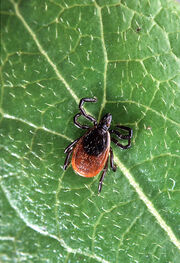
they may often look like an insect upon being viewed from a distance and may need close observations to make out a difference but to keep things simple we say that arachnids have a few physical features that are quite odd for an insect namely that arachnids have 4 pairs of legs an two (2) body segments instead of having three (3) there are approximate 65000 described species. this class consists of spiders, scorpion, ticks (as shown to the right) mites, pseudo scorpions and horshoe crab was also placed into this category in 2019. Ticks are often parasitic and attach themselves to a new host by clinging onto their skin using the sharp pointed claws on the end of each leg they will then dig into the host by using their sharp mandibles to penetrate through the host's skin some species of ticks cause deadly diseases to humans one may suffer through vomiting, headaches, very high fever and a fatality rate around 30%. Spider come in several unique variations ranging from habitat to behaviors but all of them share this common descriptions that they have 4 pairs of long slender legs and two body segments spiders have 6-8 eyes as well but several species are partially blind even with all those eyes. Many species of spiders weave webs that are seemingly invisible to their unfortunate prey and are used as a shelter and a trap. Next we have scorpions, these creatures exhibit all the normal characteristics of an arachnid except for a pair of pincers used for jabbing and holding their prey then they have a venomous stinger used to stab and paralyze their prey in the fraction of a second some species can also be harmful to humans.
Myriapods
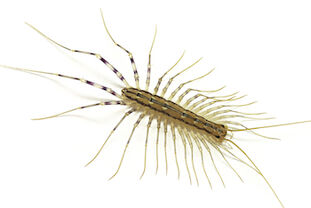
a lot of people must've seen myriapods it only consists of two creatures, millipedes & centipedes. these creatures have just too many legs unlike insects, and too many body segments as well. A cerci can be seen at the end of a centipede (only in some species) that is used as a stinger but a very few species use it as a decoy to fool predators as for their heads they also have sharp-ended claws for clinging into their prey these predators can reach upto 30cm in length, millipedes on the other end are herbivores and completely harmless, they are just like the centipede the largest millipede has approximately 370 legs! Some millipede species execrate a nasty chemical to scare of any predators while most coil up into a protective curveball. there is also a species of millipede which suffocates it's foes by releasing cyanide out of it's pores which prevent cells from taking in oxygen! Centipedes move in a highly synchronized order and so do millipedes, the common house centipede (Scutigera Coleoptrata) or the giant desert centipede have modified abdominal end-points that look like decoys for their heads that make them look like their heads, this is to fool predators and prey. Scutigera Coleoptrata has a unique habit of using it's fangs to lick it's legs! They start out with 8 then they mold and get 10 pairs of legs then it keeps on going over and over until it reaches adulthood with 30 pairs of legs!
Crustaceans
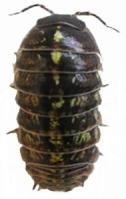
although normally (almost always) crustaceans are NOT mistaken for insects but pill bugs are crustaceans that are normally mistook for insects or arthropods due to their large number of legs. Pill bugs have gills and are closely related to their aquatic counterparts aquatic isopods that can reach the length of upto several inches. Hence when we come to the main point pill bugs have gills hence they live in moist areas however they have a natural trait which allows them for survival on terrestrial habitats that are tiny air pockets in their gills like lungs. the other creatures that make up this group are crabs, lobsters, crayfish, prawns & krill (Sorry I don't now much about crustaceans please add more information if you know about them)
Agricultural threat
All living beings need food water and air to survive, And so do insects, most insects are herbivorous and primarily feed on plant tissues, They have a unique method of consuming plant tissues in case of each insect. They can be extremely destructive to crops upon swarming up, locust are a good example of such an insects that can swarm up to consume more than 10 Tones of cereal. Pesticides are more often, not recommended due to their harmful nature which may harm helpful insect pollinators, there are several agricultural pests that are harming the local crops all day long ranging from the planthoppers with the size of a thumb to the enourmous giant beetles ranging from upto 9 inches in body length. However there is a flip side to that as well, insects like praying mantises and ladybugs are said to help farmers by consuming harmful agricultural pest such as aphids that are the primary food source for ladybugs.
Insect defenses
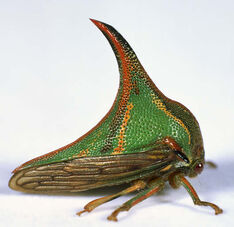
Insects from the Family of Umbonia excel at mimicry by mimicking a plant's thorns.
Main source of information HERE. An insect may defend itself in many ways. Many insects are defensive by secreting fluids that are either harmful to their predators, or cause a revolting smell. An insect also may defend itself with threat-like posture. One of the most common defenses is emitting poison or a sting into a predator, which may paralyze it for some time. Some insects like Phasmida and Umbonia (Right) have a natural mimicry which they excel at, These insects may appear closely similar to their natural surroundings, in zoology it is known as Cryptic coloration. In case of mantids, it has been recently discovered that species like the African praying mantis (Sphodromantis lineola) have been known to change colors according to their surrounding weather conditions. Some other insects have also been using the same method for their defenses.
Trivia & facts
- Heliconius sara-a specimen of lepidoptera exhibit an unusual rare phenomenon of "pupal mating" where the males are attracted to the females even before leaving the crysallis.
- Houseflies & butterflies have taste receptors on their feet that are 10 million times more sensitive than a human tongue
- Approximately 2000 silkworms are required for the production of a single pound of silk.
- A bumblebee can fly upto 80 miles in search of food
- The queen of a certain termite species can lay upto 40000 eggs per day.
- Male giant water beetles will carry their eggs on their backs this creates a pressurized weight on their bodies also creating a chance for them to drown.
- Giant water bugs carry water bubbles carrying air contents on the tips of their wings.
- Mud wasps have been known to cause plane crashes by making their nests within the air outlets of planes
- A few species of fungus-feeding ants can detect weather the food is consumable or harmful for consumption.
- Only 2.5% Of the ant queens are able to achieve success while starting a new colony.
- Some species of dragonflies can fly upto 70 Km Per hour
- Dung beetles can carry more than 250 grams of weight that is like a human lifting p 2 double decker busses!
- Insets have been around for more than 1200 million years
- The early insects ancestors had an enormous size this was due to the absence of saprophytes on the planet hence dead plants kept on photosynthesizing increasing the amount of oxygen on the planet upto 35% Which allowed the insects to evolve rapidly this changed when saprophytes were introduces.
- Phryganistria chinensi Zhao: 63.4 cm (24.6 in) – It is the largest insect on Earth.
